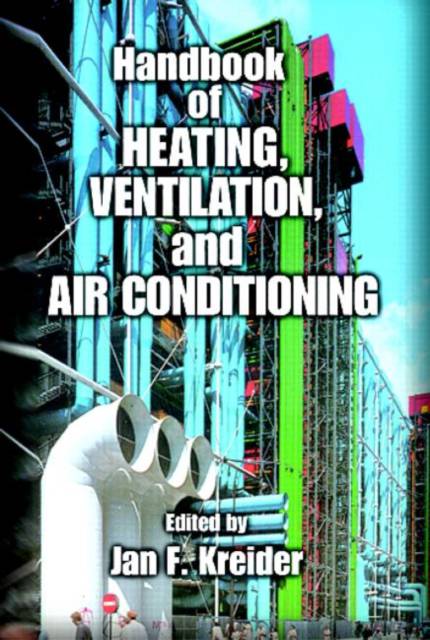
- Afhalen na 1 uur in een winkel met voorraad
- Gratis thuislevering in België vanaf € 30
- Ruim aanbod met 7 miljoen producten
- Afhalen na 1 uur in een winkel met voorraad
- Gratis thuislevering in België vanaf € 30
- Ruim aanbod met 7 miljoen producten
Zoeken
Handbook of Heating, Ventilation and Air Conditioning
€ 572,45
+ 1144 punten
Omschrijving
Over the past 20 years, energy conservation imperatives, the use of computer based design aids, and major advances in intelligent management systems for buildings have transformed the design and operation of comfort systems for buildings. The "rules of thumb" used by designers in the1970s are no longer viable. Today, building systems engineers must have a strong analytical basis for design synthesis processes. But how can you develop this basis? Do you have on your shelf a reference that describes all the latest methods? Does it cover everything from the fundamentals to state-of-the art, intelligent systems? Does it do so in practical way that you can easily access and use when you need to? The Handbook of Heating, Ventilation, and Air Conditioning does. It combines practice and theory, systems and control, and the latest methods and technologies to provide, in one volume, all of the modern design and operation information needed by HVAC engineers. The Handbook of Heating, Ventilation, and Air Conditioning will stay up-to-date while other resources become outmoded and go through lengthy revision and reprint processes. Through a link on the CRC Web site, owners of the Handbook can access new material periodically posted by the author.
Specificaties
Betrokkenen
- Uitgeverij:
Inhoud
- Aantal bladzijden:
- 680
- Taal:
- Engels
- Reeks:
Eigenschappen
- Productcode (EAN):
- 9780849395840
- Verschijningsdatum:
- 26/12/2000
- Uitvoering:
- Hardcover
- Formaat:
- Genaaid
- Afmetingen:
- 178 mm x 254 mm
- Gewicht:
- 1387 g

Alleen bij Standaard Boekhandel
+ 1144 punten op je klantenkaart van Standaard Boekhandel
Beoordelingen
We publiceren alleen reviews die voldoen aan de voorwaarden voor reviews. Bekijk onze voorwaarden voor reviews.










